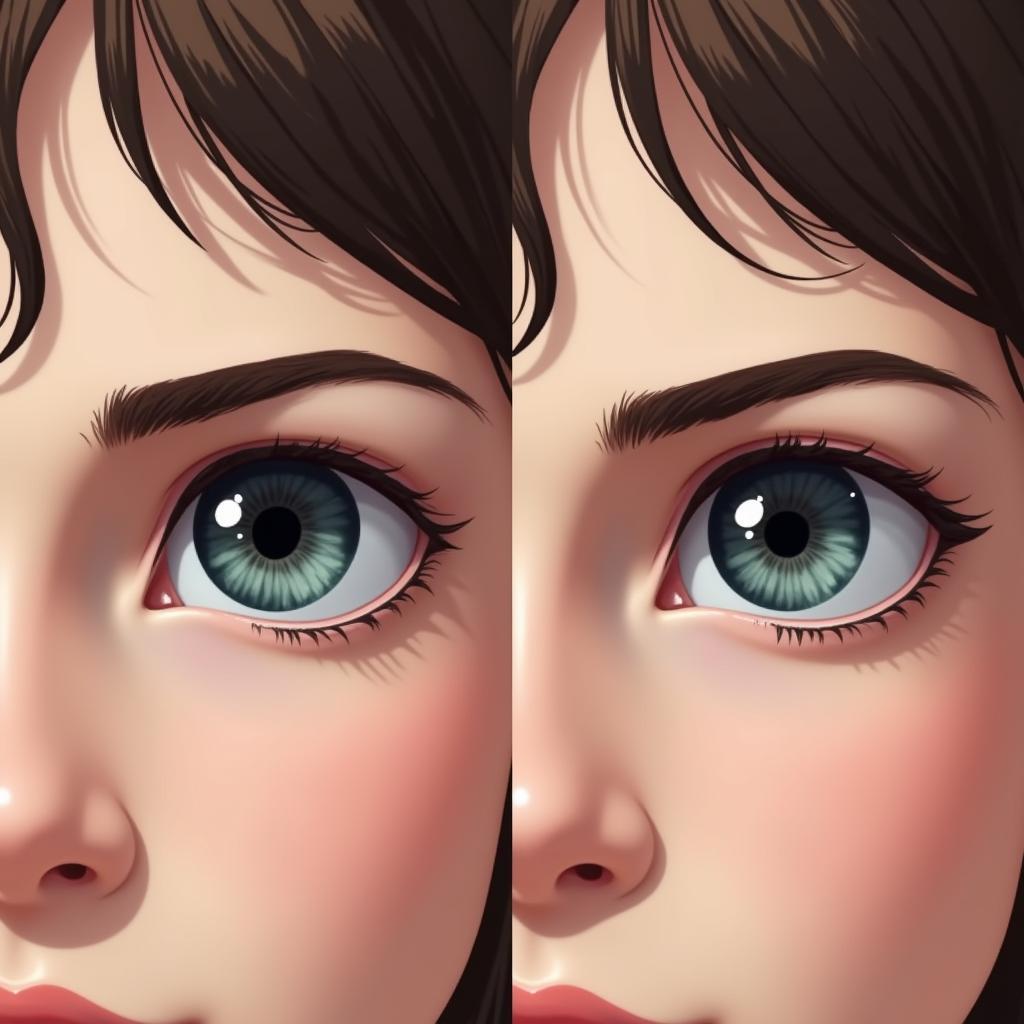We’ve all been there – a sudden rush of emotions washes over you, and you feel like your whole world has shifted. But what about your eyes? Could your mood actually be reflected in the color of your iris? Let’s delve into the fascinating connection between your eyes, your emotions, and whether your feelings can truly make your eye color change.
Understanding Eye Color
Before we explore the link between mood and eye color, it’s important to understand what determines the color of our eyes in the first place. Eye color is primarily determined by the concentration and distribution of a pigment called melanin in the iris, the colored part of the eye.
- High Melanin: Brown eyes, the most common color worldwide, result from a high concentration of melanin in the iris.
- Lower Melanin: Blue and green eyes, on the other hand, have lower melanin levels. The way light scatters within the iris creates the appearance of blue or green hues.
 Blue and Green Eyes Melanin
Blue and Green Eyes Melanin
The Science of Emotional Response
Our bodies react to emotions in fascinating ways. When we experience joy, sadness, anger, or any other emotion, our nervous system releases hormones that trigger various physiological changes. These changes can manifest physically, such as increased heart rate, sweating, or even changes in pupil size.
Can Emotions Actually Change Eye Color?
While emotions can cause our pupils to dilate or constrict, thereby slightly altering the appearance of our eye color, they don’t actually change the pigment itself. The idea that strong emotions can cause a dramatic shift in eye color is a common misconception.
 Pupil Dilation and Emotions
Pupil Dilation and Emotions
For example, if you’re feeling excited or passionate, your pupils might dilate, allowing more light into the eye. This can make the iris appear slightly darker or more intense, giving the illusion of a color change. Conversely, sadness or boredom might lead to constricted pupils, making the iris seem slightly lighter.
However, it’s important to remember that these changes are subtle and temporary. Your underlying eye color, determined by melanin, remains the same.
Other Factors Influencing Eye Color Perception
If you’ve ever noticed your own eyes appearing to change color in different lighting or when you’re wearing certain clothes, you’re not imagining things! Several factors beyond emotions can influence how we perceive eye color:
- Lighting: The type and intensity of light can dramatically affect how we perceive color, including eye color.
- Clothing: The colors you wear, especially near your face, can create reflections that influence how your eye color appears.
- Makeup: Eye makeup can enhance, mute, or even completely alter the perceived color of the iris.
- Age: In some cases, eye color can slightly darken with age due to changes in melanin production.
Conclusion
While the idea of our eyes changing color with our mood is a captivating notion, the science doesn’t quite support it. Our emotions can cause subtle changes in pupil size, which might create the illusion of a color shift, but our true eye color, determined by melanin, remains constant.
The next time you experience a surge of emotion, take a moment to observe your eyes. You might notice a slight difference in their appearance, but rest assured that your unique eye color is a constant part of you, regardless of your mood.
FAQs
1. Can eye drops change my eye color?
Certain eye drops used to treat glaucoma can darken eye color as a side effect, but these changes are typically permanent.
2. Do babies’ eyes change color?
Yes, babies are often born with blue or gray eyes because their melanin production hasn’t fully developed. Eye color typically stabilizes by around one year of age.
3. Is it possible to have two different colored eyes?
Yes, this condition is called heterochromia and occurs when the irises of the two eyes have different melanin concentrations.
4. Are there any medical conditions that can change eye color?
Certain eye injuries, infections, or diseases can cause changes in eye color. If you notice any sudden or concerning changes in your eye color, it’s crucial to consult an eye doctor.
5. Can I change my eye color permanently?
While colored contact lenses offer a temporary solution, surgical procedures to permanently change eye color are controversial and not widely available.
For more information on the fascinating world of color and its impact on our lives, explore these related articles:
- Can Your Eyes Change Color Based on Mood?
- Are Light Colored Eyes More Sensitive to Light?
- What Color is Shadow?
If you have any further questions or need expert advice on enhancing your living spaces with the power of color, don’t hesitate to contact us. Our team at Color Box Hanoi is dedicated to helping you create vibrant and inspiring environments that reflect your unique style.
Contact us:
Phone: 0373298888
Email: [email protected]
Address: 86 Cầu Giấy, Hà Nội
We offer 24/7 customer support.
